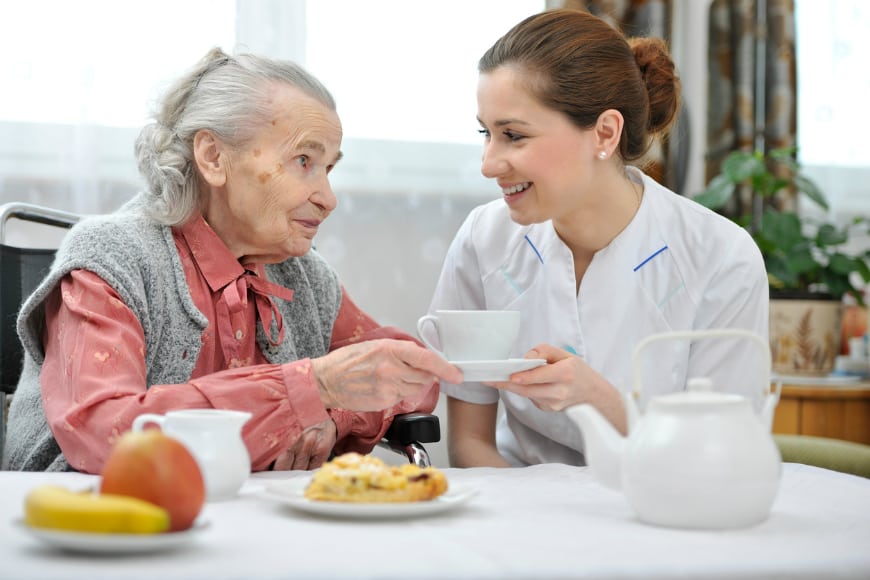
Leftovers
Can I use "leftovers" in my facility?
Any food that is leftover (food that was meant to be served for a meal, but was not all served), should be used as follows: Leftovers should be covered, labeled and dated, then stored appropriately (refrigerated or frozen) within 1 hour. Leftovers must be cooled to less than or equal to 41 degrees F within 4 hours. Leftovers must be reheated to 165 degrees for a minimum of 15 seconds and then held at the proper temperature for service (>135 degrees F). It is a good idea to use a cooling log to document that proper time and temperature control was achieved. If there is any question that the leftovers were not handled following appropriate food safety guidelines, they should be discarded. Leftovers should not be used to make pureed food.
Food Temperatures
What should the food/beverage temperature be at point of service in LTC?
Once the food leaves the serving line, temperature mandates are no longer in effect. F804 in the CMS State Operations Manual for long-term care facilities states that a facility serve ” food and drink is “palatable, attractive, and at a safe and appetizing temperature.” The interpretive guidelines state: “Is food served at preferable temperature (hot foods are served hot and cold foods are served cold) in accordance with resident preferences? (Not to be confused with the proper holding temperature).” If you are not receiving complaints from residents about food temperatures, the temperatures are likely to be acceptable for your resident population’s preferences. It is good practice to periodically evaluate food temperatures using test trays and to promptly evaluate food temperature complaints.
Policies & Procedures
I have been asked to redo the policy and procedure manual for clinical nutrition in my facility. Do you have any ideas on what should be on the clinical side of the table of contents?
We have a Policy & Procedure Manual for use in long term care facilities and hospitals, and it could also be adapted for Assisted Living Facilities or other settings. You can view the table of contents on our website. It has a thorough nutrition care section. You might consider purchasing this – it comes with a CD ROM for customization – a huge time saver!
Date Marking
When labeling and dating in most facilities do they use a discard date on items or do they label and date with an open date? We are having a tough time agreeing on which is the best. Can you give us an idea of what most places do?
In our facilities it seems easier for them to do a “discard by” date for the food so there is no mistake about how long it should be kept. The “opened on” dating system leaves staff having to figure out when the product should be discarded (which may not be the best procedure). Facilities usually create a policy to determine how the dating is done in the foodservice department and that is the way they train the staff. Whatever your facility decides on, be consistent with it and make sure all staff are following the same procedure.
Handwashing/Gloves
When should foodservice workers wear gloves?
F812 in the CMS State Operations Manual states that employees should never use bare hand contact with any foods, ready to eat or otherwise. Gloves should be worn whenever a worker is directly handling a food item with the hands. Staff need to wash their hands before putting gloves on. Gloved hands are considered a food contact surface that can get contaminated or soiled. Gloves need to be changed any time they touch any soiled item, contaminated surface, or after coughing or sneezing, touching another person or themselves, touching the table, picking something else up with the gloves, etc.) Any time they change gloves, they should wash their hands.
Revised January 14, 2022. Originally posted 2018.

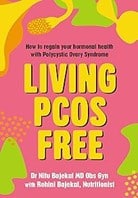

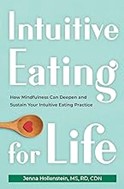
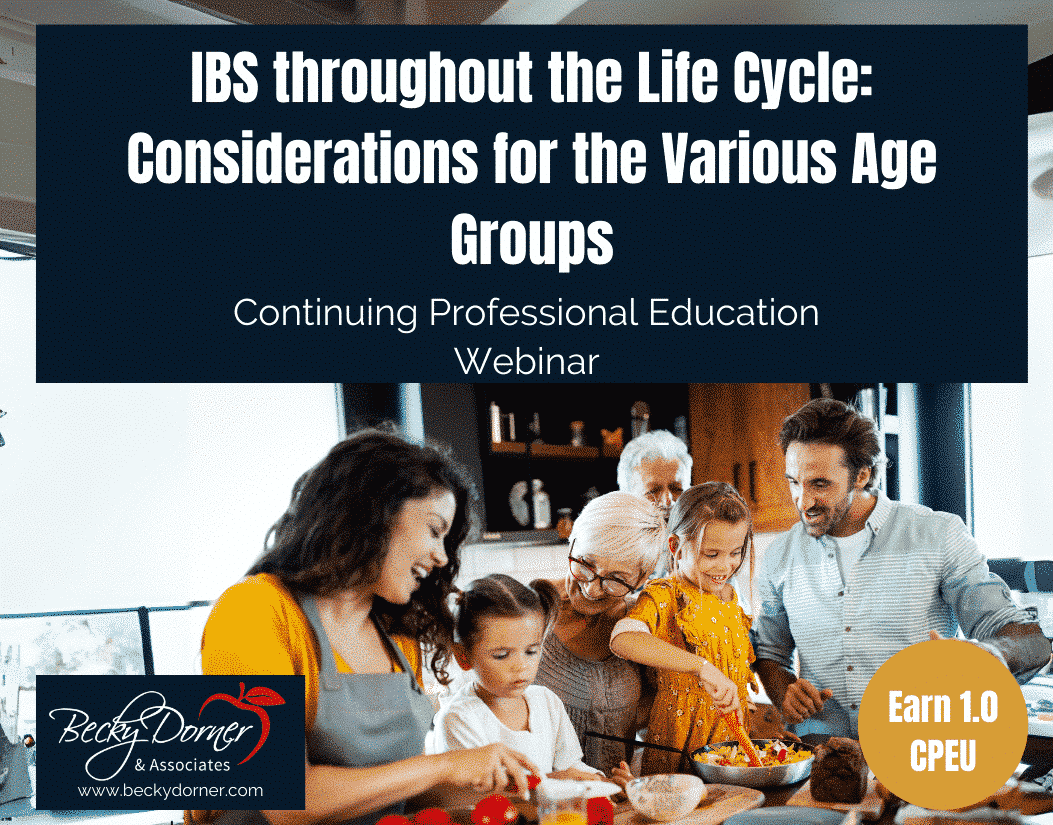
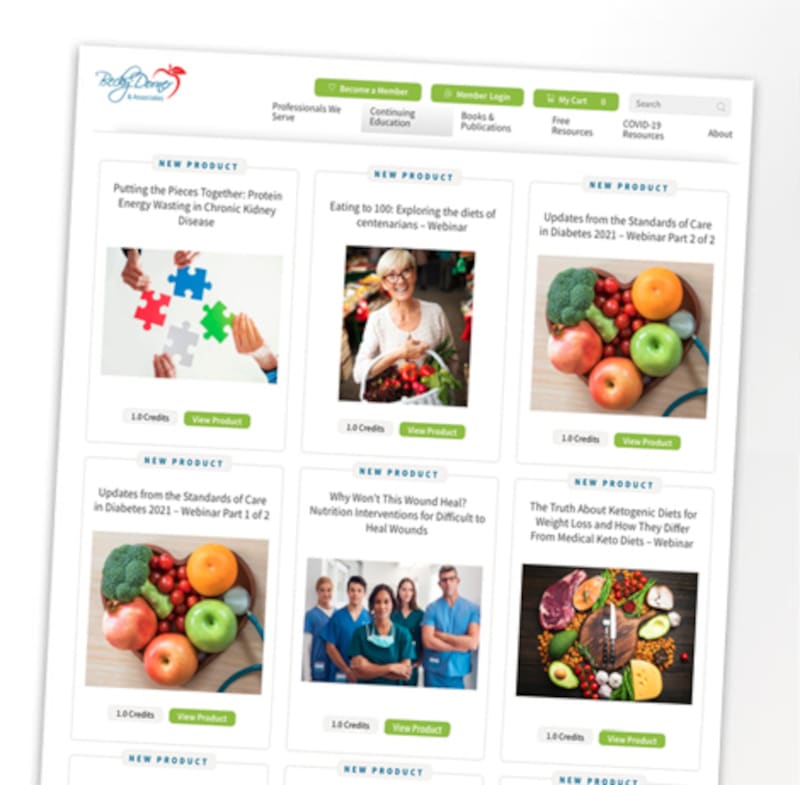
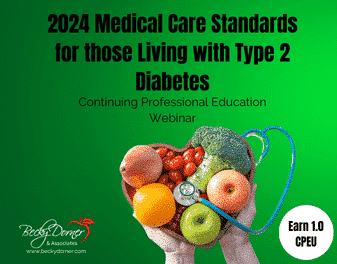
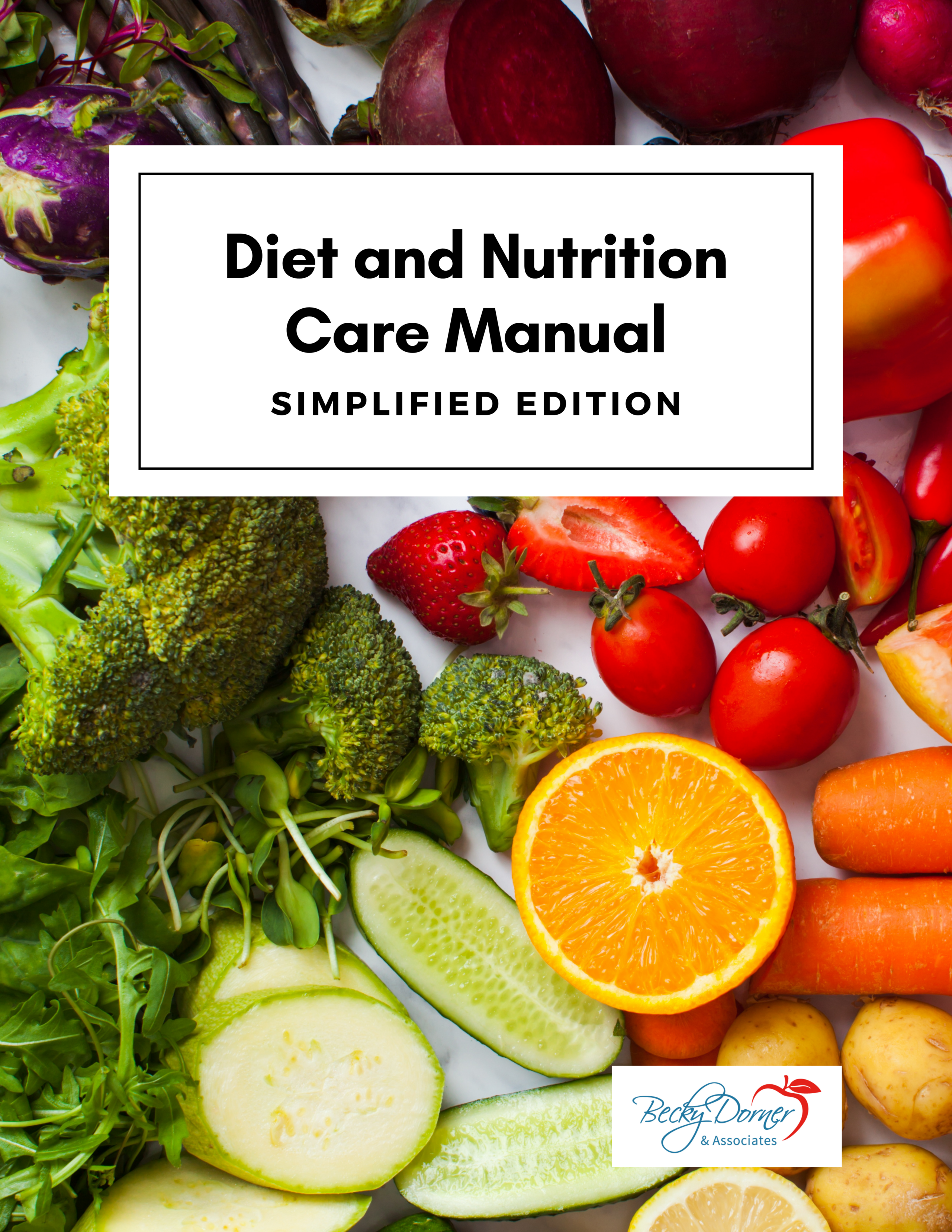
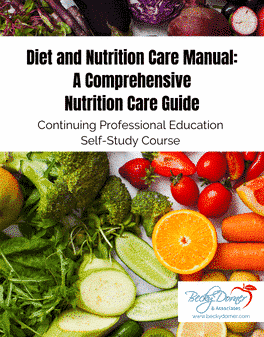
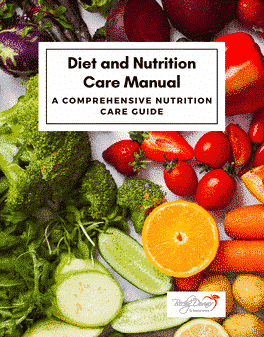


Do Food Service workers need to wear gloves when serving meals in a nursing facility?
Any time they touch the food directly with bare hands, they should be wearing gloves. If only touching plates or trays, gloves may not be needed, but clean hands are always essential prior to serving. Workers can use tongs instead of using direct hand contact for serving bread and similar items.
Where can I find in-services for cooks on how to properly prepare pureed, mechanical chopped and mechanical ground. Additionally should all purees and mechanicals have gravy with their meats?
Hi Tammy,
We are getting ready to release a series of training videos for frontline staff on IDDSI. These will provide an overview on IDDSI, a review of all 7 levels of food/drinks, details on testing for foods and drinks, and food preparation for the various levels. These are free to view thanks to the support of Hormel Health Labs. You will be able to find them under the Free Resources tab of our website. In the meantime, there are 2 free CPE webinars available for professionals that will provide some great information on IDDSI – these can also be found under the Free Resources tab on our website.
Becky
is there a regulation on coffee temps in long term care
There is no specific federal regulation on coffee temperature. However, it is a safety issue and may be covered by some of the tags below. If coffee is cooled, residents may complain that is served too cold. If a resident is at high risk for spilling, thus burning themselves with hot coffee, you may consider providing a mug with a secure lid. We also cover this in our Policy & Procedure Manual, page 3-53 in the 2021 edition Food Safety: Preventing burns. It details water temperatures and time to receive a second or third degree burn as well as a specific policy and procedure.
https://www.cms.gov/Regulations-and-Guidance/Guidance/Manuals/downloads/som107ap_pp_guidelines_ltcf.pdf
F804, Page 572:
Food should be palatable, attractive, and at an appetizing temperature as determined by the type of food to ensure resident’s satisfaction, while minimizing the risk for scalding and burns.
F802, Page 568:
When evaluating timeliness, factors that should be considered include but may not be limited to: • Meals or nutritional supplements are provided in accordance with a resident’s medication requirements; • Meals intended to be “hot” are served as such and are maintained at the desired temperature when provided to the resident
When it comes to dating shelf stable individually packaged foods (snack pack pudding/jell-o, snack size chips, peanut butter cups, etc.) what are the guidelines? I remember things being date in dry storage, but can’t seem to find anything specific with these kind of things and was unsure if I could go off their best by date on the box or if they needed to be labeled at all!
Food should be dated as it is placed on the shelves if required by state regulation. So you may want to check your state Food Code
The 2017 FDA Food Code page 58 states
(C) PACKAGED FOOD shall be labeled as specified in LAW, including 21 CFR 101 FOOD Labeling, 9 CFR 317 Labeling, Marking Devices, and Containers, and 9 CFR 381 Subpart N Labeling and Containers, and as specified under §§ 3-202.17 and 3-202.18 https://www.fda.gov/media/110822/download
Considering the above comments, best practice may be to store the individually packaged foods in the original box, and label the receiving date of the product on the box. Staff should be educated to rotate inventory, and not transfer the individual packages from one dated box to another. You could then refer to the best by date (keeping in mind this may not necessarily mean discard date). If the individually packaged food items are going to be stored in a different location than in the original box in a storage room (such as a satellite kitchen or pantry), you could consider dating the individual items if they are not going to remain in a box that is dated.
I know that prepared food should have clear dates on them (our facility discards after 3 days). However, what are the policies and/or regulations on packaged food that has a expiration date on the item (salad dressing, cheese, sandwich meat..ect?) Someone threw away hundreds of dollars worth of resident groceries cause those items didn’t have a date??? They are things that are good for months?? Please help.
It is difficult to answer your question because states may have their own regulations and those regulations may differ depending on the facility (assisted living vs skilled nursing, for example). Without knowing what state or what type of facility you are in, here are some thoughts.
The federal food code (Food Code 2017 | FDA) indicates that ready to eat and packaged foods should be held for a maximum of 7 days and should be clearly marked with the date they are opened. This includes any facility refrigerator, whether in the kitchen, dining rooms, or nourishment rooms. It excludes foods prepared and packaged by a food processing plant such as deli salads and shelf-stable foods.
According to the CMS regulations for skilled nursing facilities (SOM – Appendix PP), a nursing home is responsible for storing visitor food in such a way to clearly distinguish it from food used by or prepared by the facility. The regulations for food storage do not apply to personal refrigerators.
The regulations are subject to interpretation, and I have personally experienced survey teams in skilled nursing facilities interpret them differently on different survey teams when it comes to this subject. As I see it, if undated and unlabeled food (resident’s name) was found in a facility refrigerator, it should be discarded, even if it is of a shelf-stable nature. If it was in a resident’s refrigerator, it should not have been removed.
Hi! Our Longterm Care Facility is looking for a new software program that will produce meal tags, recipes, production sheets etc. Can you help/recommend software?
Unfortunately, we don’t have recent experience or expertise in this area so can’t really provide recommendations. Software choices are very individual and what works best for one facility might not work for another. Of course, cost and level of technical support provided are a consideration. I do know that many companies offer tutorials/tests of their products, so I suggest you take advantage of that before purchasing.
If you are a member of the Dietetics in Health Care Facilities DPG of the Academy of Nutrition and Dietetics, I suggest you ask your question on their EML. You will likely get responses from RD’s that have experience selecting software and hands-on experience using different programs.
Thanks for thinking of us and good luck!